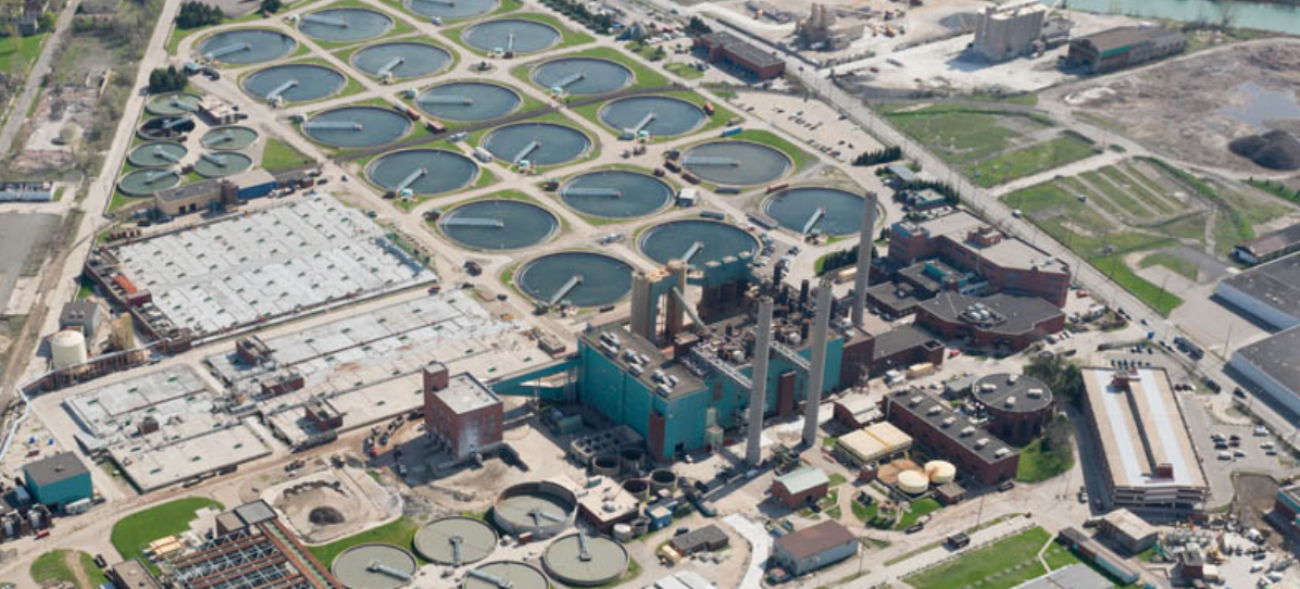Poop sleuths: MSU studies Detroit wastewater for next coronavirus outbreak

A team of Michigan State University researchers hope to make use of an unlikely tool in Michigan’s fight against the new coronavirus: human waste.
It’s common knowledge that coughing or sneezing when sick can spread illness to others. But humans also shed viruses in our waste, which means the things we flush down our toilets contain clues to what ails us.
By collaborating with the Great Lakes Water Authority and Detroit Water & Sewerage Department to collect and analyze samples of metro Detroit wastewater, researchers hope to detect new COVID-19 outbreaks before sick people even realize they’ve been infected.
- The latest: Michigan coronavirus map, curve, chart, updated COVID-19 news
- Gov. Whitmer extends Michigan coronavirus stay-at-home order to May 28
- Whitmer reopens Michigan from coronavirus in phases: What that means to you
“If our prediction models are showing early warning signals of a problem, we could sound the alarm for state and federal authorities to prepare for an outbreak,” Irene Xagoraraki, associate professor in environmental engineering at MSU who is leading the study, said in a news released. “The medical community needs to be armed with resources to help these communities and early action might be one of the answers.”
The study builds upon Xagoraraki’s past research tracking viruses among Detroit’s population by analyzing the city’s wastewater in 2017 and 2018. During that study, researchers detected a spike in hepatitis A infections seven to nine days before health care facilities noticed the change.
Anil Gosine, a program manager with Detroit Water & Sewer Department, said the COVID-19 wastewater project has the potential to function as a similar early warning system.
When a patient contracts COVID-19, it can take as long as two weeks for them to start feeling sick. But infected people begin “shedding virus” in their saliva, mucus and waste much earlier.
“Lots of people have the virus and don’t know they’re spreading it,” Gosine said. “The idea would be, this would give us an indication of where there’s an invisible uptick.”
Armed with that information, local public health officials could take measures to prevent further spread, such as advising area residents to limit their face-to-face interaction and ramping up local testing and contact tracing efforts. Hospitals, meanwhile, could brace for a coming surge in patients.
If Detroit could have received such a warning before the first Michiganders tested positive for COVID-19, “hundreds if not thousands of lives could have been saved,” said William Cunningham, associate dean for global health in the MSU College of Osteopathic Medicine.
Although the effort to apply the MSU team’s research method to the COVID-19 pandemic is still in its infancy, researchers say it will soon be ready for public health officials. They are collecting samples weekly and working to establish a “baseline” level of COVID-19 in wastewater, Cunningham said, which will enable them to spot any spikes that indicate a new outbreak.
That early detection capability is particularly useful given that Michigan’s COVID-19 testing capabilities remain low. Tracking the virus through widespread testing requires not only the cooperation of residents willing to get tested, but also access to reagents, swabs and other medical equipment that is in short supply after the pandemic fueled a global spike in demand.
The MSU team’s viral forecasting system requires only access to a community’s wastewater and the ability to analyze the samples.
“Say you have 5,000 people in a square mile,” Cunningham said. “Think of the resources it would take to test every one of those 5,000 people and wait for results to come back, versus those 5,000 people are peeing into the same sewer, so you get aggregate data by running one sample.”
Researchers around the globe are using similar methods to track COVID-19, with promising results. Preliminary findings from a study in Massachusetts, for example, showed that COVID-19 volumes in a metropolitan area’s wastewater indicated a far higher infection rate than had been officially reported in that area at the time.
University of Michigan researchers are teaming up with Stanford University researchers to conduct a similar analysis of central California wastewater.
In addition to assisting with Michigan’s COVID-19 response, Xagoraraki and her team hope their methodology can help detect and contain other infectious disease outbreaks around the globe. They are working with the Institute for Global Health and the MSU College of Osteopathic Medicine to apply their research outside of the United States, particularly in developing countries where medical care is more difficult to access.
“It could be part of a larger solution across the country and world,” Xagoraraki said, to “predict hot spots and critical moments for the onset or spread of outbreaks prior to full-blown demonstration of disease.”
Michigan Environment Watch
Michigan Environment Watch examines how public policy, industry, and other factors interact with the state’s trove of natural resources.
- See full coverage
- Subscribe
- Share tips and questions with Bridge environment reporter Kelly House
Michigan Environment Watch is made possible by generous financial support from:
Our generous Environment Watch underwriters encourage Bridge Michigan readers to also support civic journalism by becoming Bridge members. Please consider joining today.
See what new members are saying about why they donated to Bridge Michigan:
- “In order for this information to be accurate and unbiased it must be underwritten by its readers, not by special interests.” - Larry S.
- “Not many other media sources report on the topics Bridge does.” - Susan B.
- “Your journalism is outstanding and rare these days.” - Mark S.
If you want to ensure the future of nonpartisan, nonprofit Michigan journalism, please become a member today. You, too, will be asked why you donated and maybe we'll feature your quote next time!






